The attractiveness and aesthetics of a good smile is the main reason to seek the orthodontic treatment. The purpose of this study was to evaluate and compare the perception of smile aesthetics and attractiveness among dental students and health students aged 20-22 and 23-25 years groups.
A modified intraoral smile image of an orthodontic patient having seven different clinical cases along with the questionnaire to among dental students and other health collages at Taif University, Kingdom of Saudi Arabia, was given to participate in this study. A total of 120 dental students and 307 students from other health colleges participated in the study.
A 100% (120 students) dental students and 61.4% (307 students out of 500) other health college students responded for the questionnaire with the photographs.
The most important objective of achieving a balanced smile by a dentist requires knowing patient's perception, requirements, and satisfaction about the smile. The factors/variables of smile aesthetics and attractiveness are different across the world due to various reasons and could be due to the age, gender, knowledge and background, ethnicity, profession, socioeconomic status, region and culture of the participants. Hence, while planning aesthetic treatment for a harmonious, balanced smile need not require correction of all variations/factors.
Aesthetics, Attractiveness, Perfect smile
Proper understanding of the attractiveness of a smile is very essential to create good aesthetics and occlusion. Numerous studies have shown that clinicians can make an attractive 'golden smile' or 'perfect smile' based on many factors [1]. An attractive or beautiful smile has many social implications and shown to significantly influence enhance the character such as inter-personal relationships, employment prospects, and financial success [2-6]. Although, the appearance of a smile is mostly subjective and creating a reliable, perfect smile along with aesthetics and other components is best by dentists [7].
Many studies have revealed major dissimilarities in the perceptions of smile attractiveness between laypersons and specialists, males and females, and among laypersons of various ages [8-10]. This study intended to identify and evaluate the perception of aesthetics and smile attractiveness, also to compare between dental and health (pharmacy) students comprising both males and females and aged 20-22 and 23-25 years groups.
In the present study, an intraoral image of ideal smile was modified by multiple images editing software's to resemble seven different clinical cases to evaluate the perception of smile aesthetics and attractiveness. Seven different clinical images are as following:
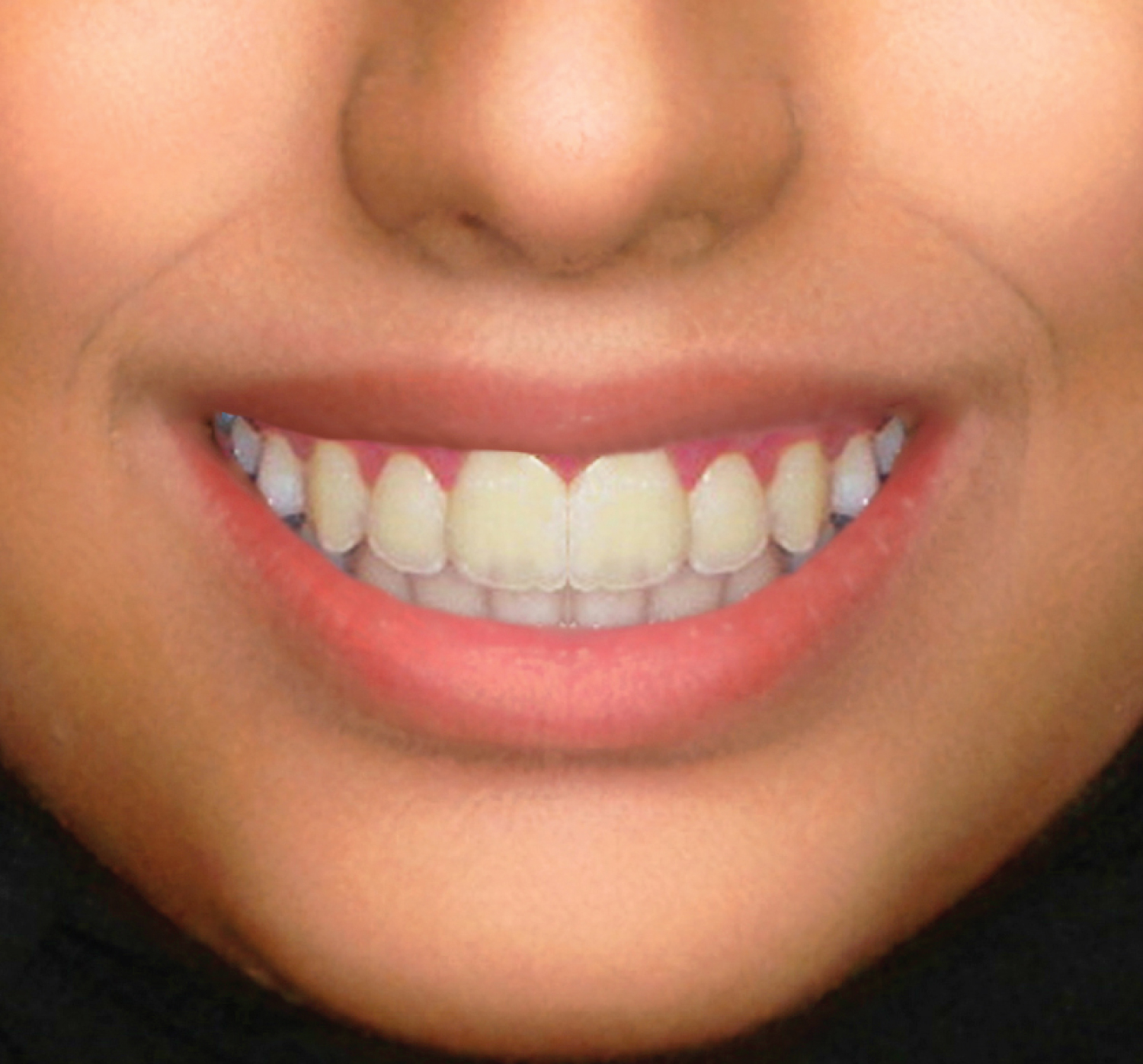 Figure 1: Low upper gingival margin.
View Figure 1
Figure 1: Low upper gingival margin.
View Figure 1
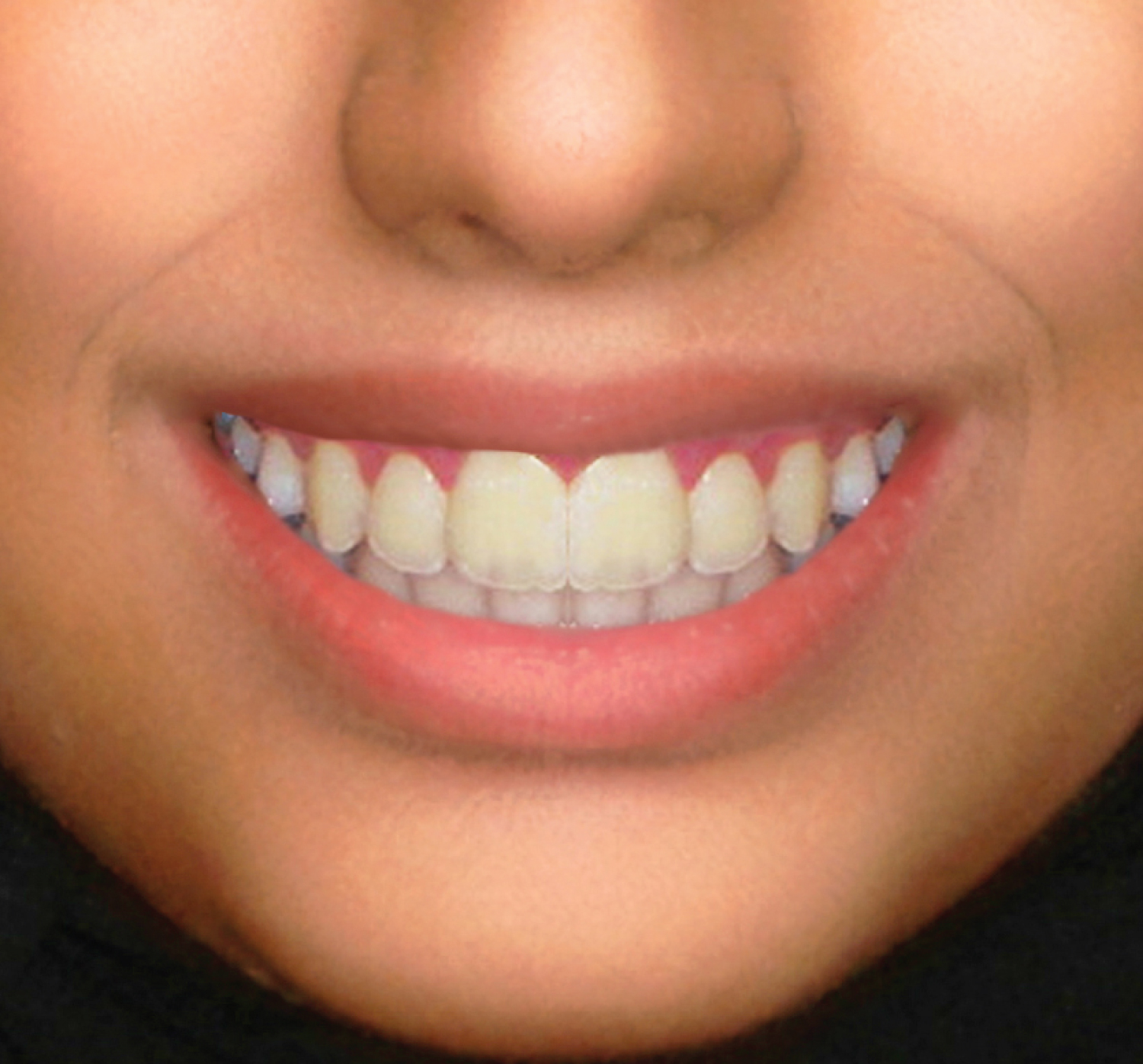 Figure 2: Small laterals.
View Figure 2
Figure 2: Small laterals.
View Figure 2
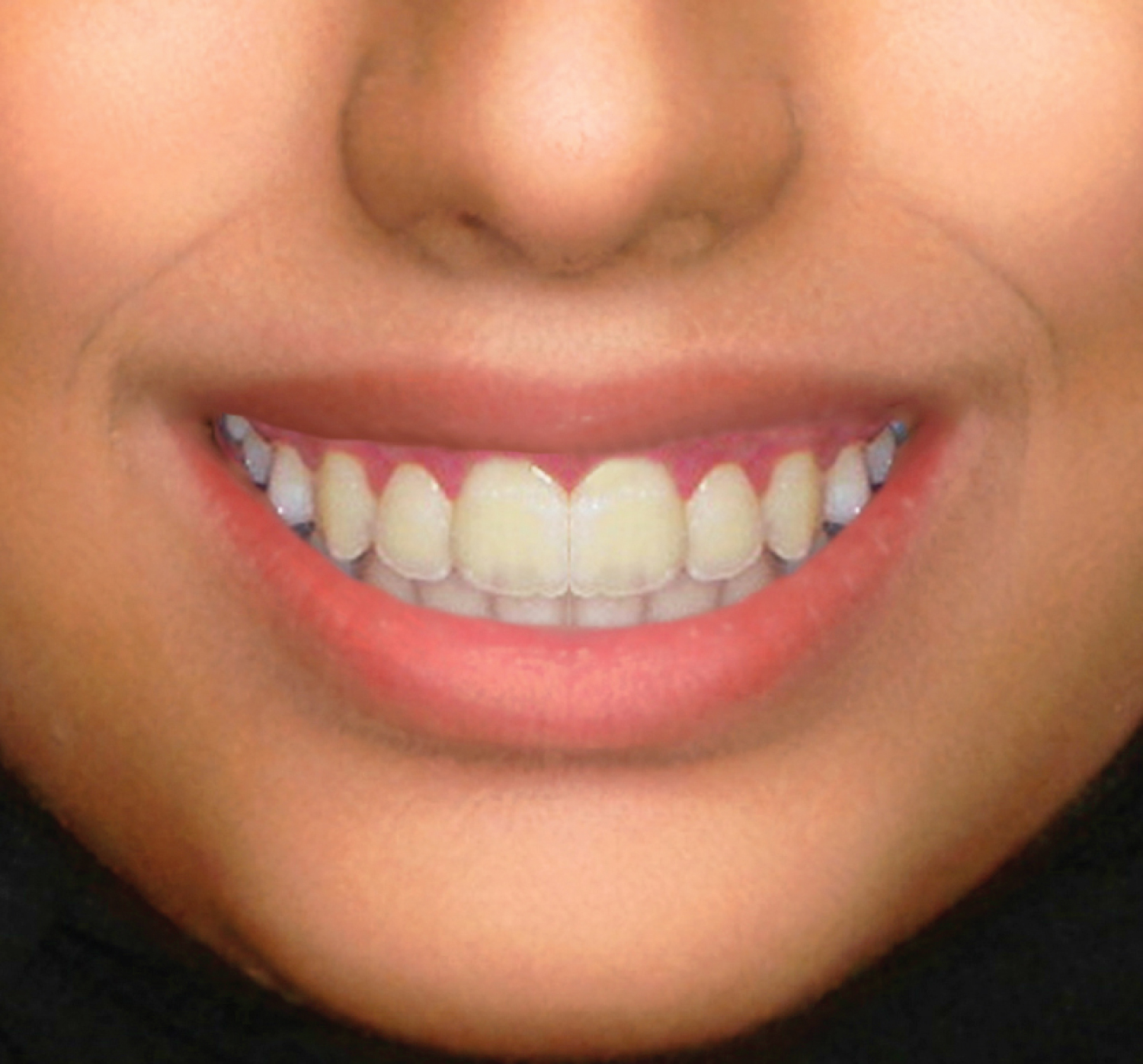 Figure 3: Normal gingival display.
View Figure 3
Figure 3: Normal gingival display.
View Figure 3
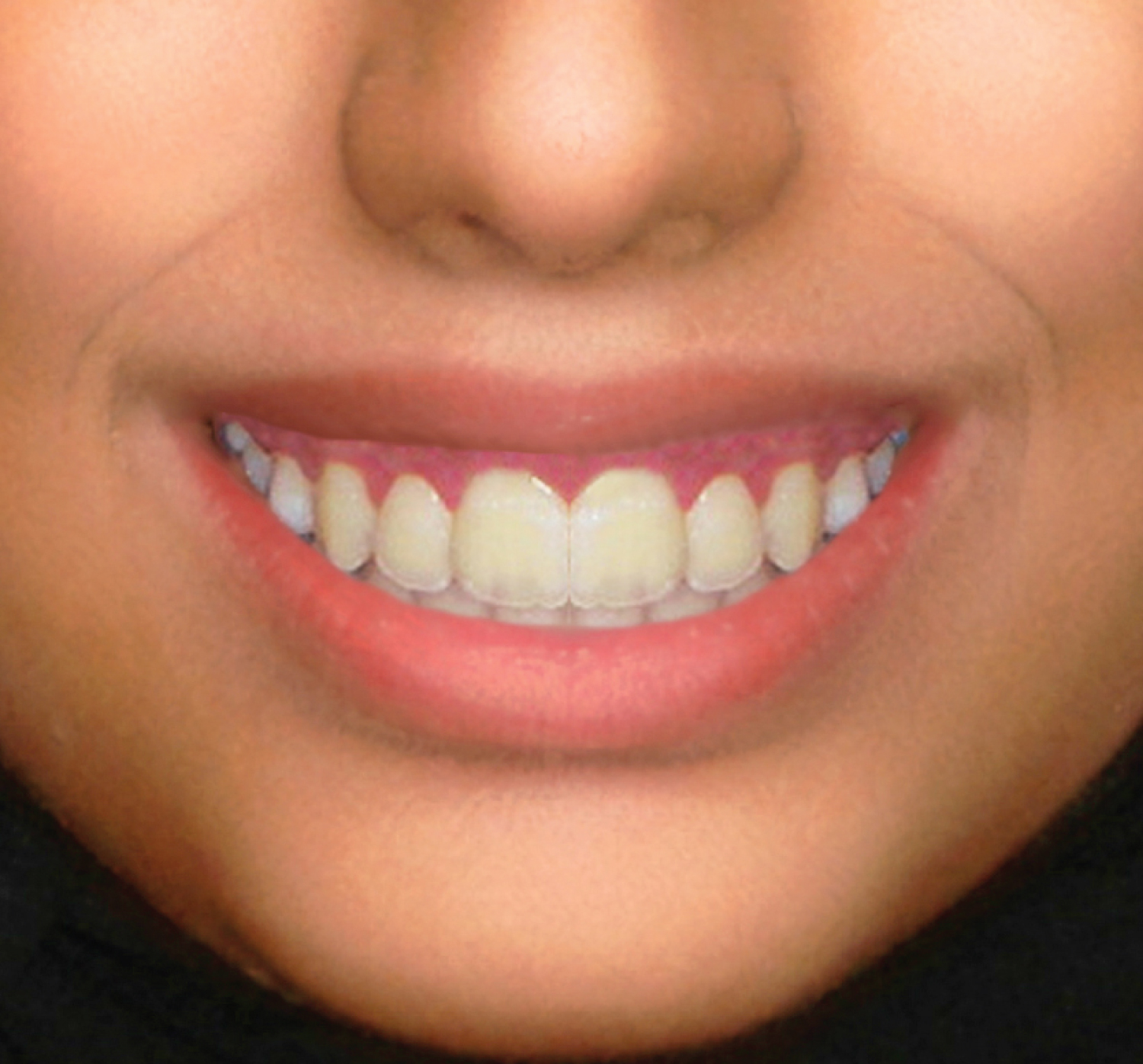 Figure 4: High upper gingival margin.
View Figure 4
Figure 4: High upper gingival margin.
View Figure 4
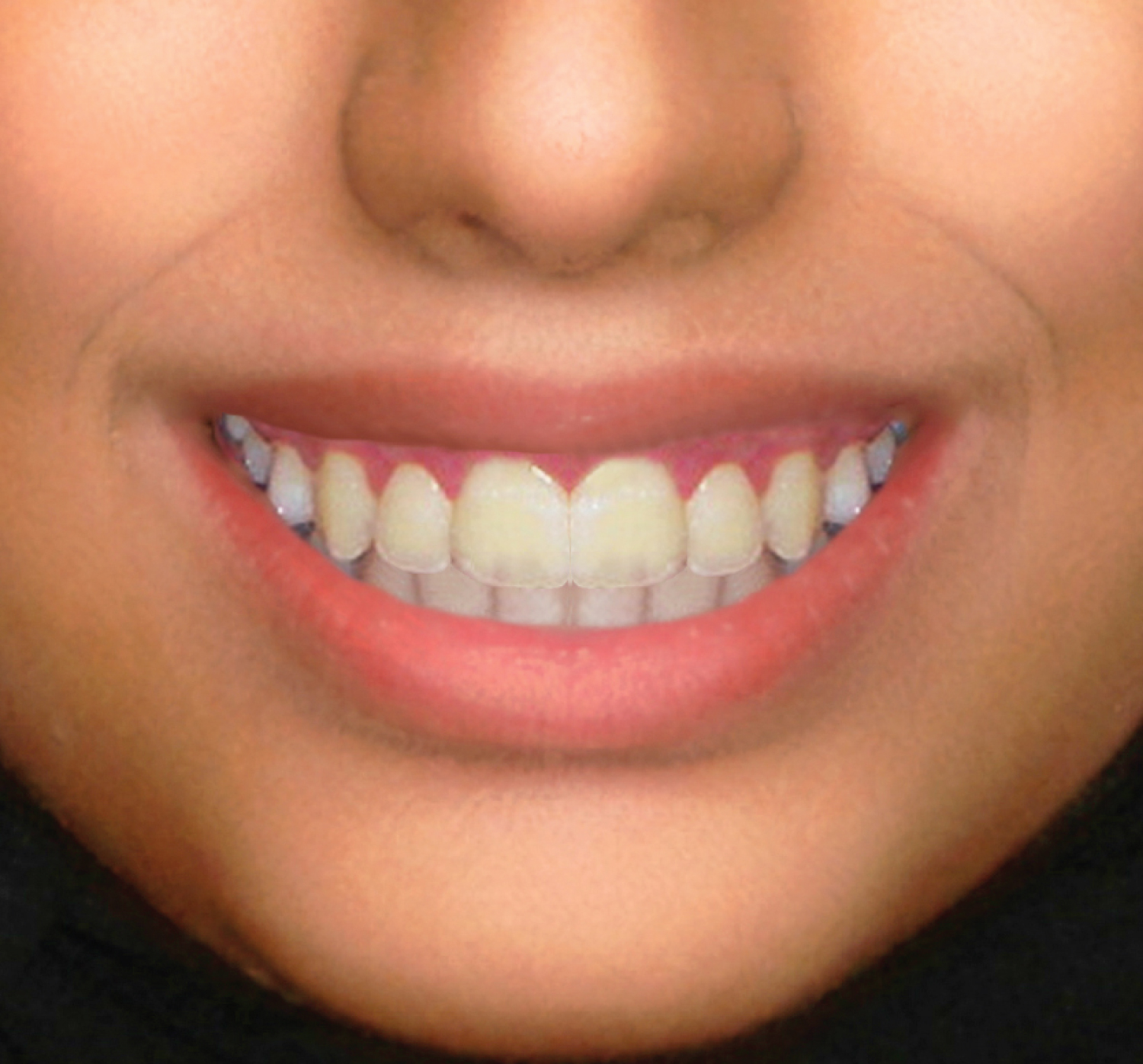 Figure 5: Straight smile arc.
View Figure 5
Figure 5: Straight smile arc.
View Figure 5
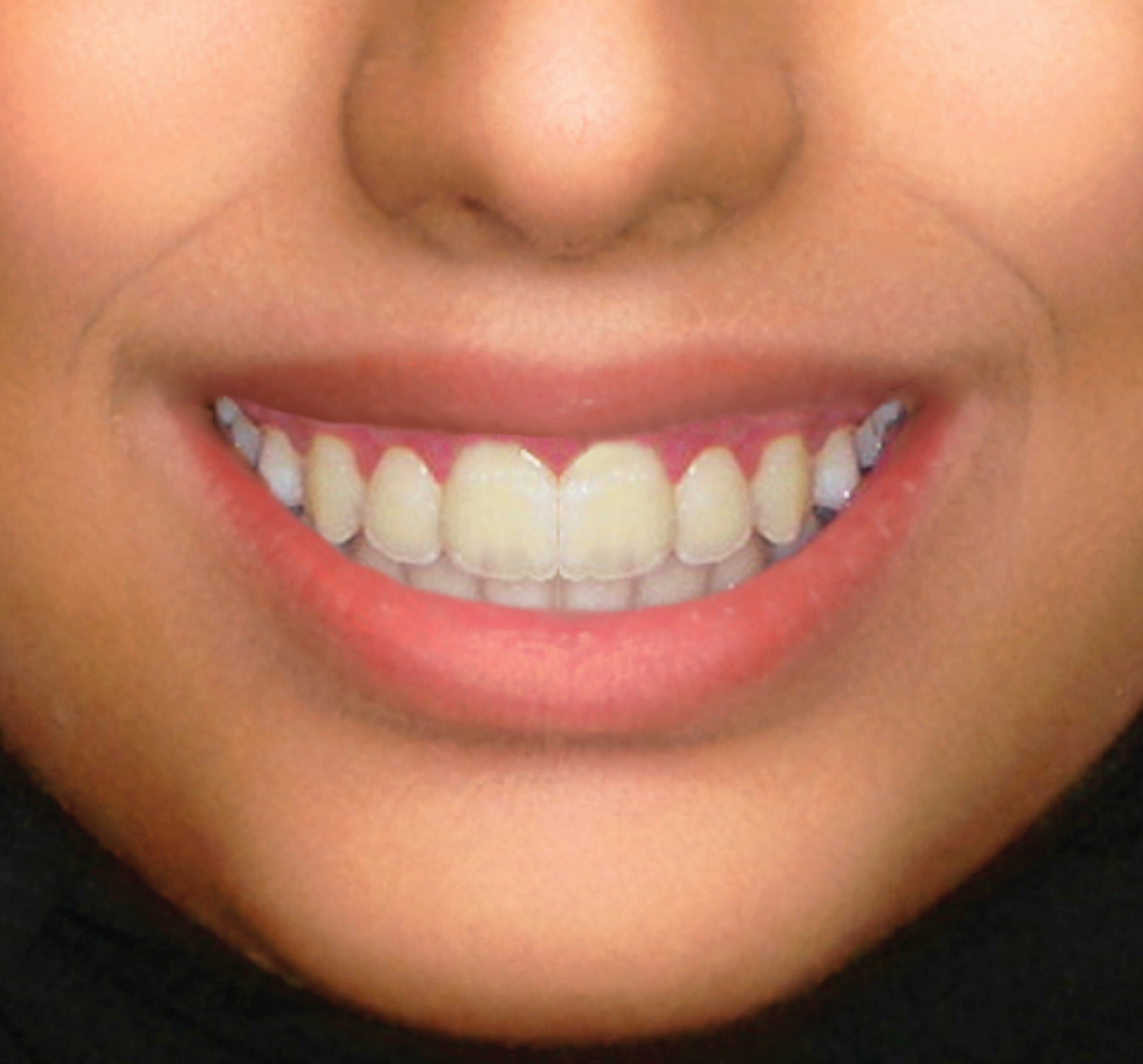 Figure 6: Midline shift.
View Figure 6
Figure 6: Midline shift.
View Figure 6
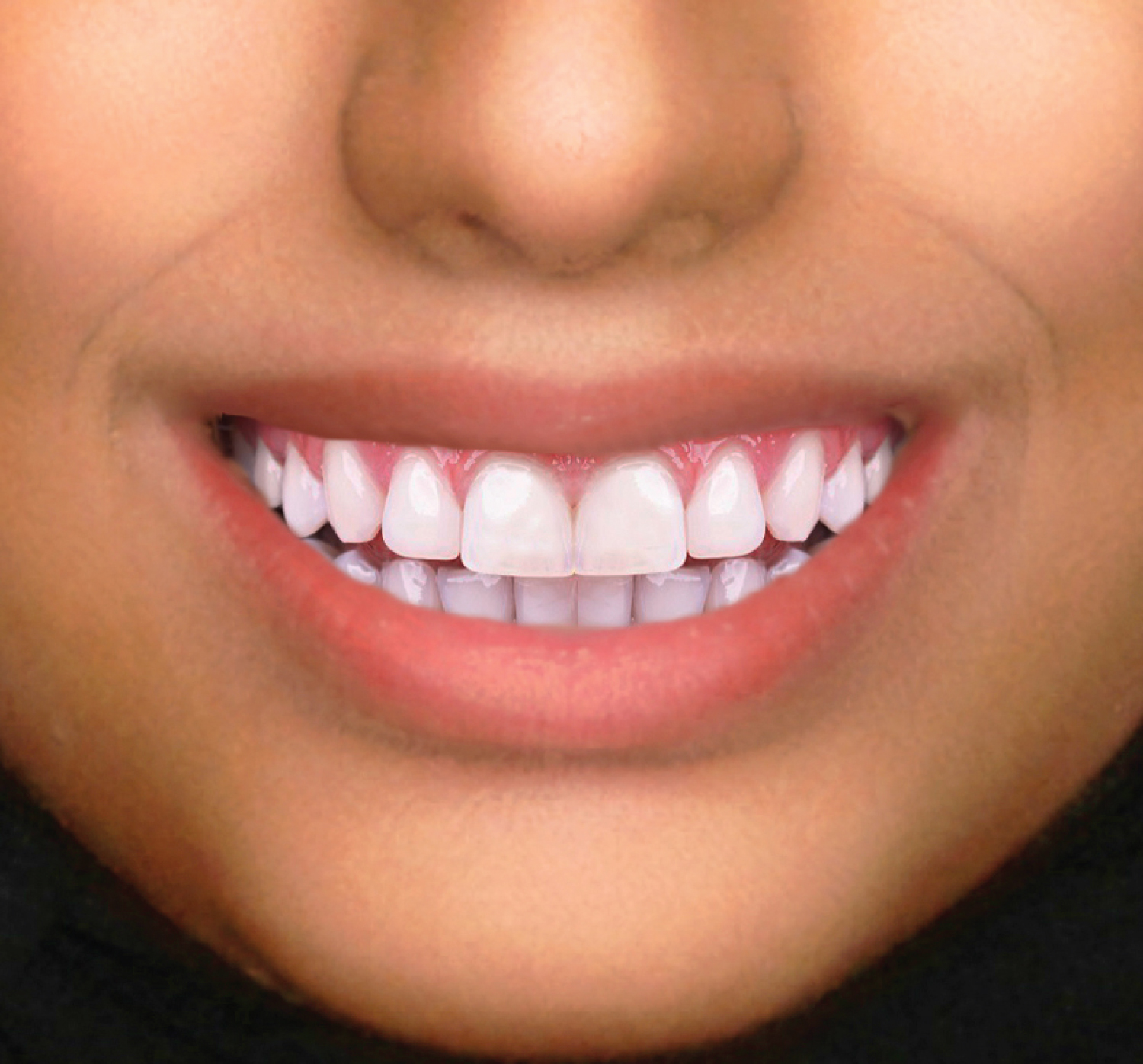 Figure 7: Aesthetic veneers.
View Figure 7
Figure 7: Aesthetic veneers.
View Figure 7
The ethical approval for the study was obtained from the Deanship, Research Ethics Committee, Taif University (DAR 42-023), prior to the start of distributing the questionnaire. The questionnaire including the edited seven images having parameters to measure the aesthetic perception among dental students and other health collages at Taif University, were given for response via emails with an invitation to participate in this study. An informed consent was also obtained from all the participants. Each participant was required to rank his/her perception to smile aesthetic among each image from 0 to 10 while 10 means most beautiful. At the Faculty of Dentistry, Taif University has only male dental students.
The data obtained was entered and analyzed using the statistical package for social services (SPSS) for windows software. Descriptive data for continuous variables were obtained through mean and standard deviation (SD). The statistical significance was considered at p < 0.05.
A total of 620 participants were involved in the study. The response rate for dental students was 100% with 120 responses, for other health colleges the response was 307 with 61.4 % response rate (307/500). In the present study, the Dental students showed the differences in the perception of attractiveness and aesthetics of smile and had a highly significant 'p' value (0.005) for high upper gingival margin and straight smile arc (p value 0.003 and 0.007 respectively) as shown in Table 1. However, statistically significant differences were noted (Table 2) for all factors of smile attractiveness and aesthetics with the only exception for midline shift. When comparing the perceptions of male and female health (pharmacy) students, differences were noted with all variables of smile except for low upper gingival margin and aesthetic veneers as presented in Table 3. The comparison of perceptions of smile between male dental students and other health students as in Table 4, revealed statistical differences for high upper gingival margin, straight smile arc, midline shift and aesthetic veneers. All variables for attractiveness and aesthetics of smile perception between dental and health (pharmacy) students were statistically significant (Table 5) with the exceptions for small laterals and midline shift.
Table 1: Comparison of smile variables among male dental students according to age. View Table 1
Table 2: Comparison of smile variables among male health students according to age. View Table 2
Table 3: Comparison of smile variables among health students according to gender. View Table 3
Table 4: Comparison of smile variables among male dental and male health students. View Table 4
Table 5: Comparison of smile variables among dental and health students. View Table 5
Several studies have been done to know how general dentists, specialists and common people make interpretation of smile using photographs and clinical examination [8,11-13]. Most studies compared tooth characteristics and factors affecting aesthetics for assessment of ideal smile [8,11-14], however are limited to images and participants were asked to rank the images not score the smile.
Our study emphasizes the differences in results of the perception of smile aesthetic and attractiveness among dental and health (pharmacy) students (Table 1, Table 2 and Table 5). The students scored for the perceptions of seven aesthetically altered smile images. Non dental health (pharmacy) students showed more significant responses to all variables except for midline shift (Table 2). These results indicate that non-dental health (pharmacy) students were more responsive. However, there seemed to be more openness among the dental students in the perception to aesthetic and attractiveness factors of smile.
There were no statistical significant differences noted for scores of gingival display, small laterals, midline shift and aesthetic veneers when compared to high upper gingival margin and straight smile by dental students (Table 1). The amount of gingival display is one of the factors that affects the attractiveness and aesthetics of smile which has been studied earlier in the literature. Many studies by conducted by Kokich and colleagues have concluded that 3 mm-4 mm of gingival display is acceptable [14,15]. This finding indicates that dental students are aware of smile arc pattern and more gingival display as these are not ideal for the smile.
Generally, dental students are more responsive to midline shift than pharmacy students. Even though, the midline shift was considered non-attractive for the smile, this was not significant with dental and pharmacy students (Table 1 and Table 2). Our results showed that both dental and pharmacy students were acceptable for midline shift. In contrast to our results, it is reported that 83% of orthodontists and dental professionals and 56% of laypersons were sensitive to a 2 mm of midline shift [16]. Similar to our study, it is reported that a midline shift of less than 4 mm has no significance on aesthetic perceptions of laypersons [5,15] and a 2 mm diastema is considered to acceptable by general dentists and laypersons [14]. However, in the present study, it was statistically significant when compared with male and female pharmacy students (Table 3) and between dental and pharmacy students of male gender (Table 4).
When it comes to the size of lateral incisors, dental students were less concerned (Table 1) and pharmacy students responded with statistically significant results (Table 2 and Table 3). On comparison, there was no significance between male dental and pharmacy students (Table 4 and Table 5). On the contrary, Bukhary, et al. [17] have reported that dentists were more responsive to varying maxillary lateral incisor dimensions on perception of smile aesthetics.
Currently, we have only male dental students are enrolled at the faculty and female students' enrolment will start from the next academic year as the facilities are under construction. Hence, the response of both genders was done by pharmacy students alone. In our study, the effect of gender on the perceptions of aesthetics and attractiveness of smile was statistically significant for most of the variables exception being the veneers and low gingival margin for upper teeth (Table 3). Similarly, on comparing the perceptions between dental and pharmacy students of male gender, statistical significance was noted for high gingival margin of upper teeth, straight arc of smile, midline shift and veneers (Table 4). However, Bukhary, et al. [17] found that there was no difference in aesthetic perceptions between males and females. Springer, et al. [18] found that curved smile arc of 2 to 4 mm is acceptable; while few reported that a reverse smile arc has a negative effect on aesthetic perceptions [19].
A review of meta-analysis by Langlois and colleagues has shown that attractive children and adults get positive result and good academic performance reviews than less/unattractive persons, thus have a greater self confidence among attractive individuals [20].
One of the most significant determinants of dental aesthetics is an impressive and good smile. The major cause for seeking aesthetic and orthodontic treatment is to get a pleasant or attractive smile [21,22]. In the present world, due to the influence of social media across the continents, lot of young individuals seek orthodontic and aesthetic dental treatments for beautiful, attractive smile. Moreover, the perception of smile may not be similar with laypersons, general dentists and other specialists. A report by Kiyak found that patients who look for orthodontic and aesthetic management desire to improve their esthetics and public recognition more than oral function or general health [23]. To have an attractive smile, amalgamation of the teeth (the hard-tissue component) with the amount of gingival and lips displayed is a must [24,25].
In the present study, the Dental students showed the differences in the perception of smile for high upper gingival margin and straight smile arc. However, in pharmacy students, statistically significant differences were noted for all factors except for midline shift. On comparing the perceptions of smile between male dental students and other health students, statistical differences were noted for most of the variables. The smile perception between dental and health (pharmacy) students were statistically significant with the exceptions for small laterals and midline shift.
There are many advantages in the study which include no comparison of ideal smile with seven different clinical cases and the use of digitally modelled photos with a standardized lip shape and tooth shade. Furthermore, an aesthetic veneer was used in the study as one of the smile variable. There are few limitations such as use of photograph of one gender, only male dental students and a smaller range of smile is used in the study. Differentiation of clinical and non clinical students needs to be done.
The authors conclude that a study with a larger population comprising laypersons, dentists and different specialists along with other health professionals, both gender and socioeconomic status may have better, varied results.
The authors wish to thank Dr. Sakeena, Assistant Professor in Preventive and Community Dentistry, Faculty of Dentistry, Taif University, Taif, KSA for helping in statistics and data analysis.
The authors declare no conflict of interest, financial or otherwise and this study has received no financial support from anyone.
An informed consent was obtained from all who participated in this study.